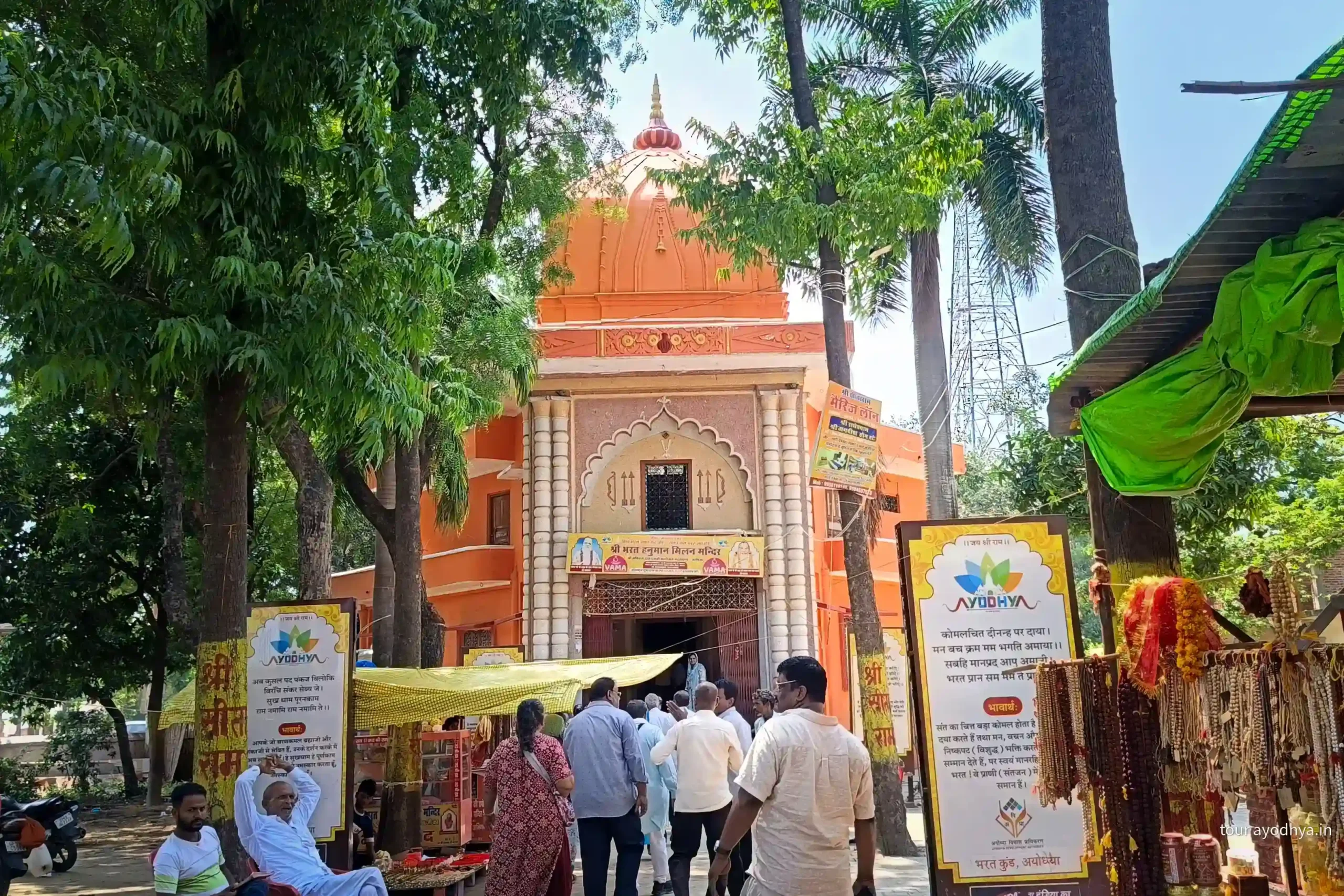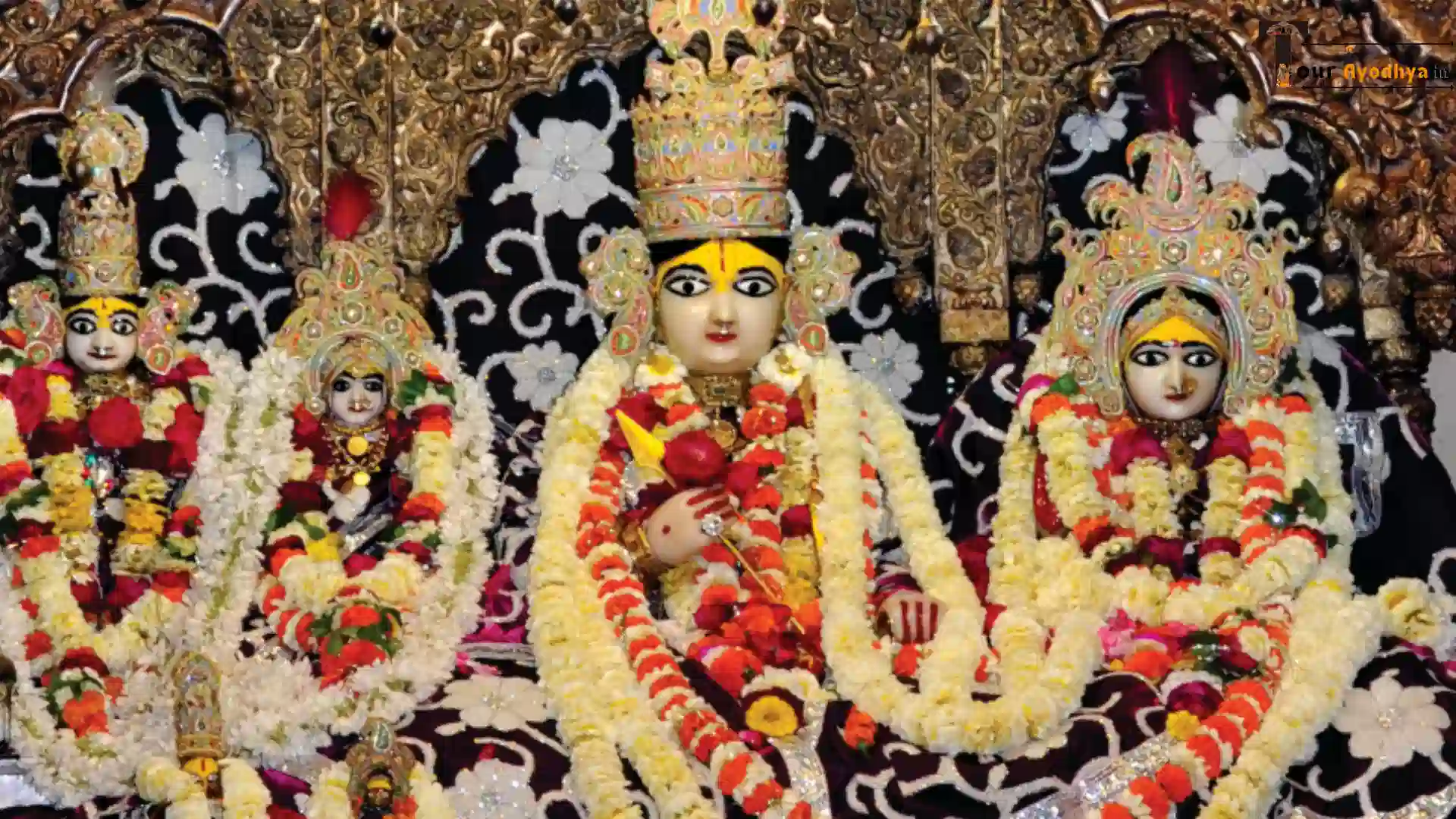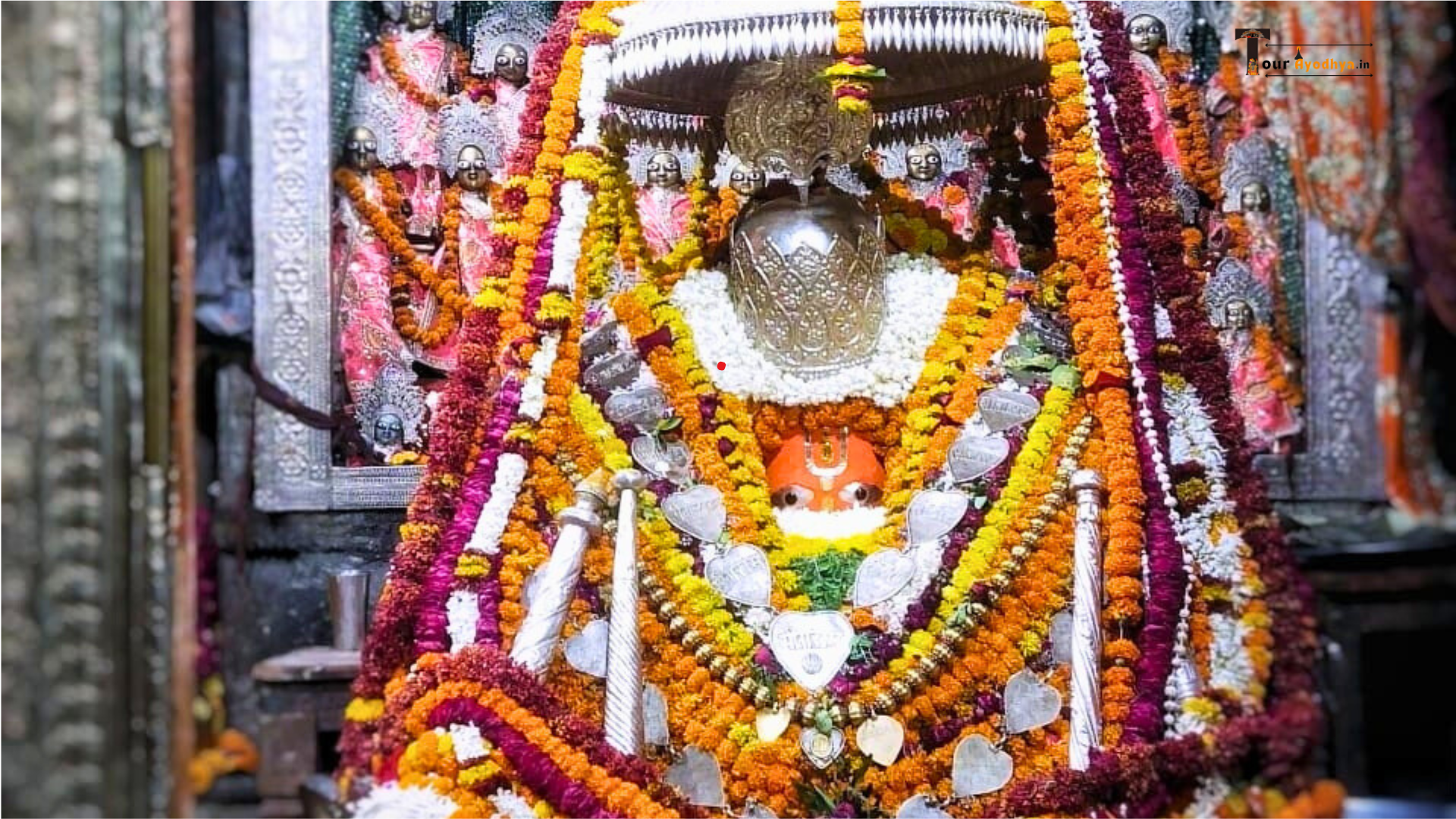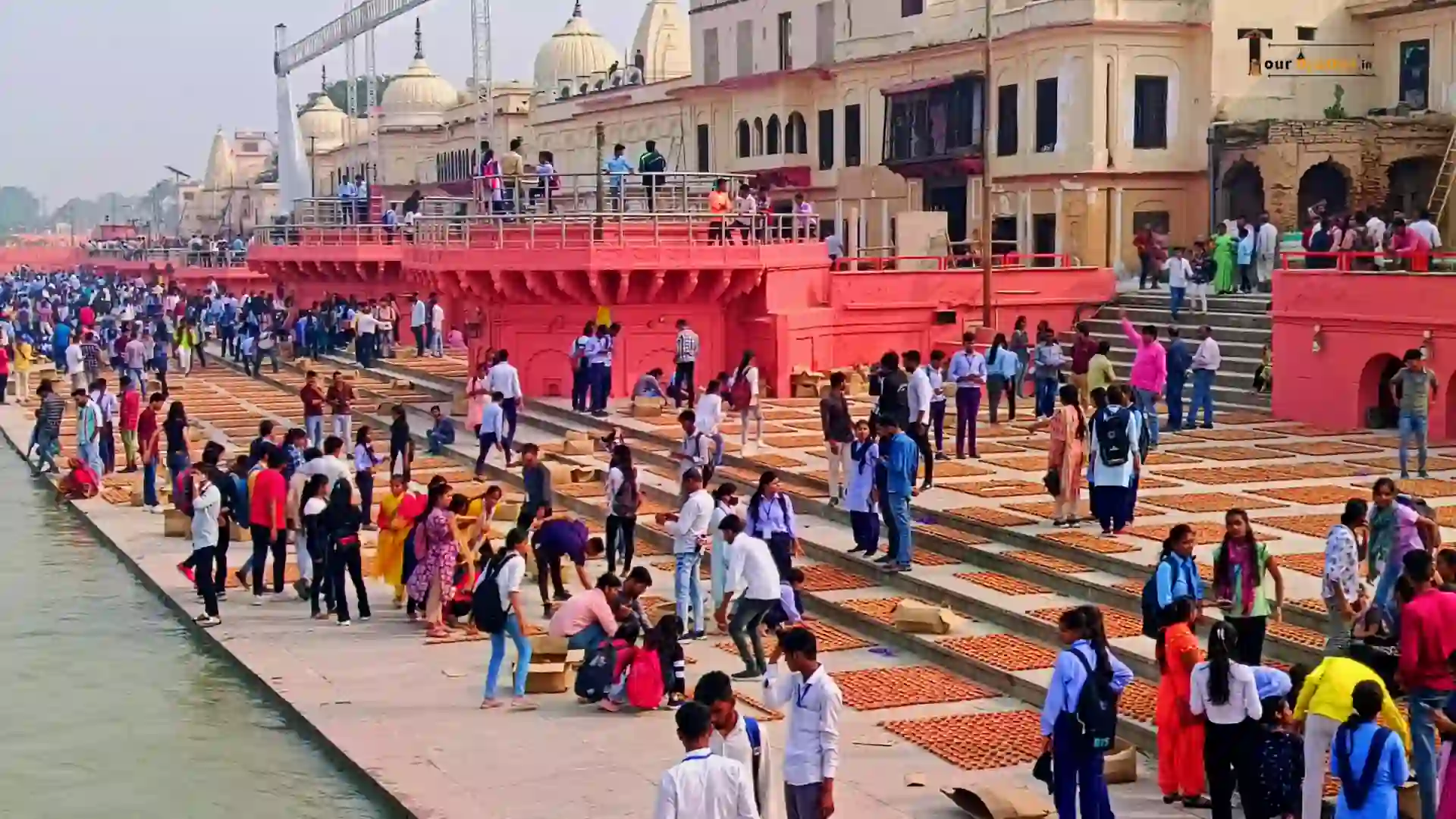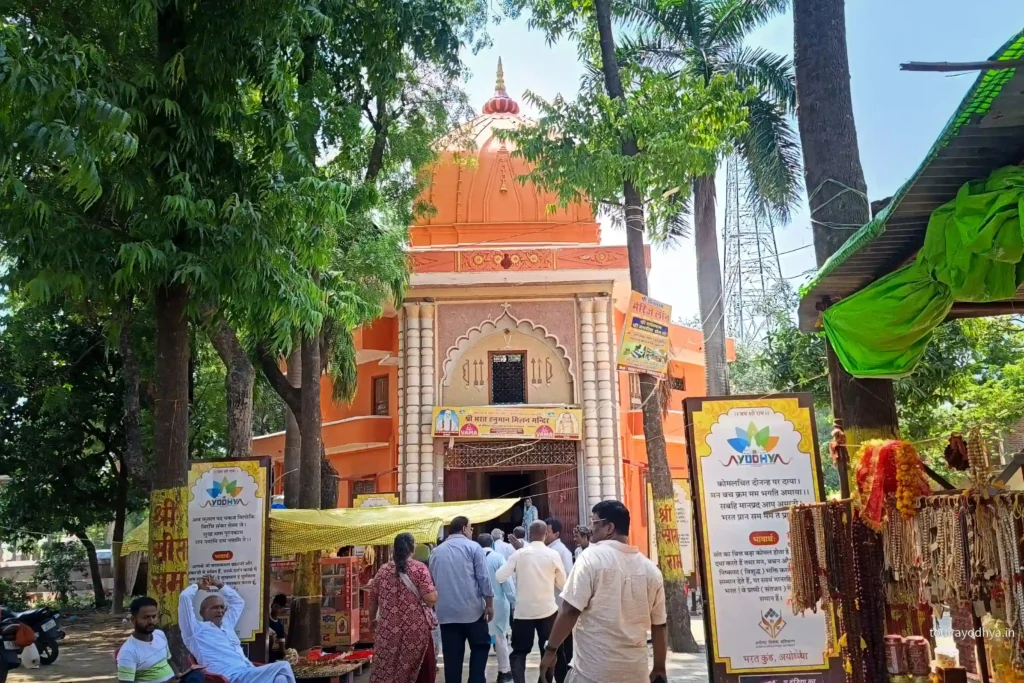
Bharat Kund Ayodhya stands as a powerful testament to profound devotion and historical depth, deeply intertwined with the epic Ramayana and the selfless penance of Lord Rama’s brother, Bharata.
This sacred site, located just 22 km from Ayodhya in Nandigram, offers pilgrims a serene environment for spiritual reflection. Bathing in its waters is believed to offer purification and is significant for ancestral rites. As a pivotal part of the Ayodhya Dham pilgrimage, Bharat Kund continues to draw devotees seeking blessings and a deeper connection to this ancient spiritual heritage.
Table of Contents
Bharat Kund Ayodhya: Historical and Religious Significance
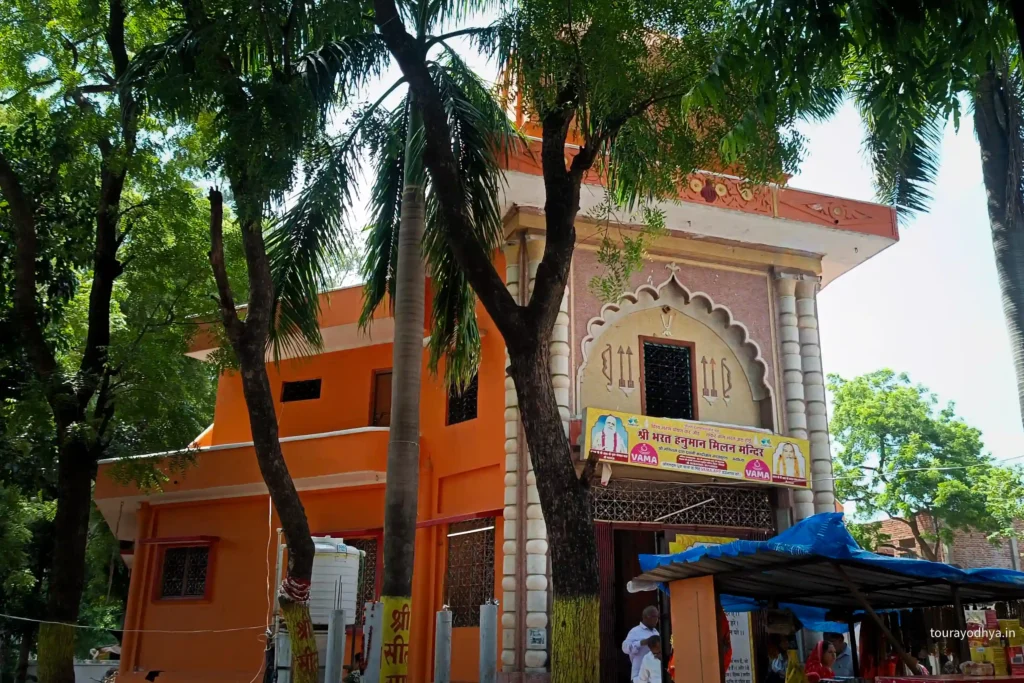
Nestled near the ancient city of Ayodhya, Bharat Kund is a site of profound historical and spiritual importance, drawing countless devotees and pilgrims. It is intrinsically linked to the epic Ramayana and the selfless devotion of Lord Rama’s brother, Bharata.
Introduction to Bharat Kund
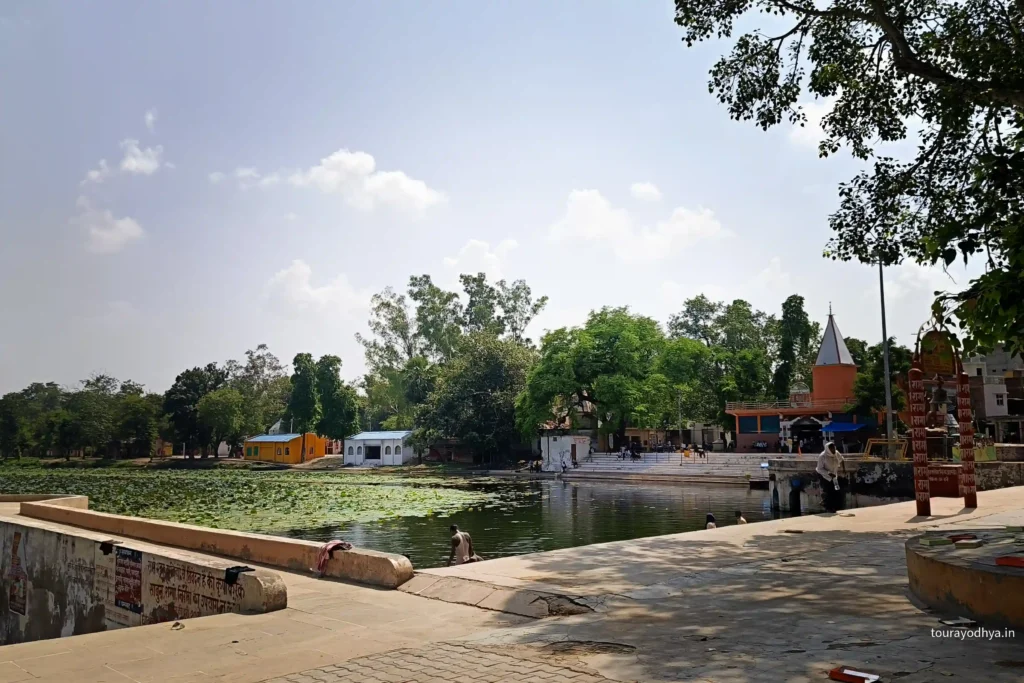
Bharat Kund is a significant holy site, located in the village of Nandigram, which is renowned as the place where Bharata, Lord Rama’s devoted brother, spent 14 years in austere penance during Rama’s exile. This area is considered ancient, with connections reaching back to the Ramayana period.
Geographical Context and Location
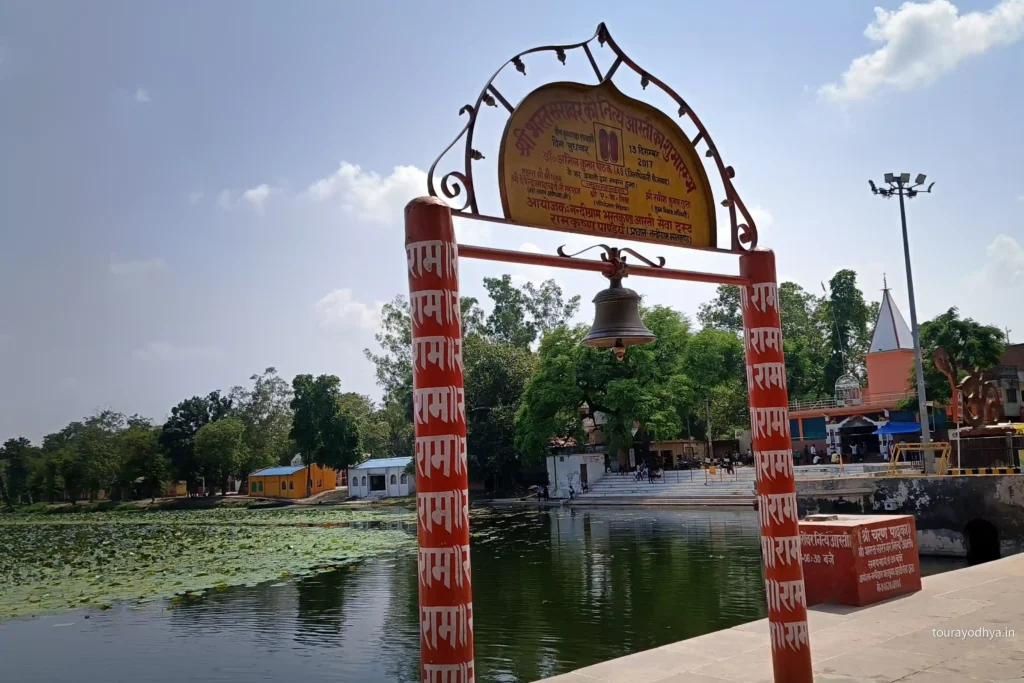
Bharat Kund is situated approximately 22 km from Ayodhya. The area where it resides, Nandigram, is located within the larger Ayodhya Dham. The journey to Bharat Kund typically involves travel from Ayodhya, leading to a serene and quiet location.
Mythological Background

The narrative of Bharat Kund is deeply embedded in the story of Lord Rama’s exile. When Lord Rama departed for 14 years, his brother Bharata refused to rule Ayodhya and instead lived a life of renunciation in Nandigram, ruling in Rama’s stead by placing Rama’s padukas (sandals) on the throne.
A notable incident associated with this site involves Hanuman Ji. While carrying the Sanjeevani herb to save Lakshmana, Hanuman was mistakenly struck by an arrow from Bharata and fell at this very spot. Upon realising his error, Bharata embraced Hanuman Ji, and a temple, the Bharat Hanuman Milap Temple, now commemorates this meeting.
Within Nandigram, particularly near Bharat Kund, visitors can explore:
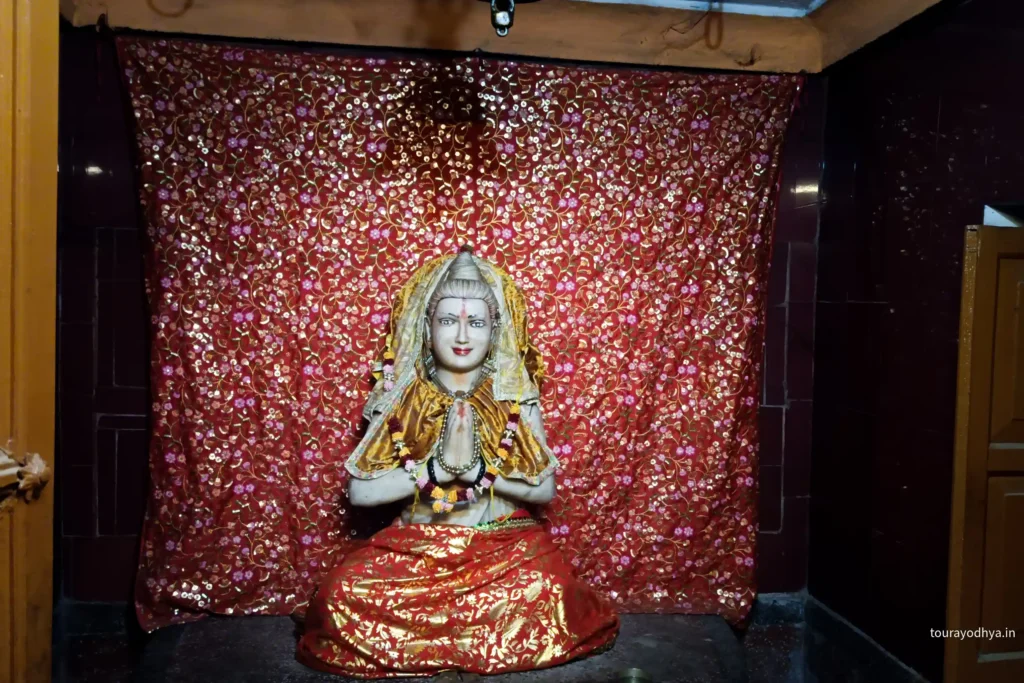
Bharat Kund: A large lake where Bharata reportedly bathed daily as part of his austere routine.
Bharata Gufa (cave):
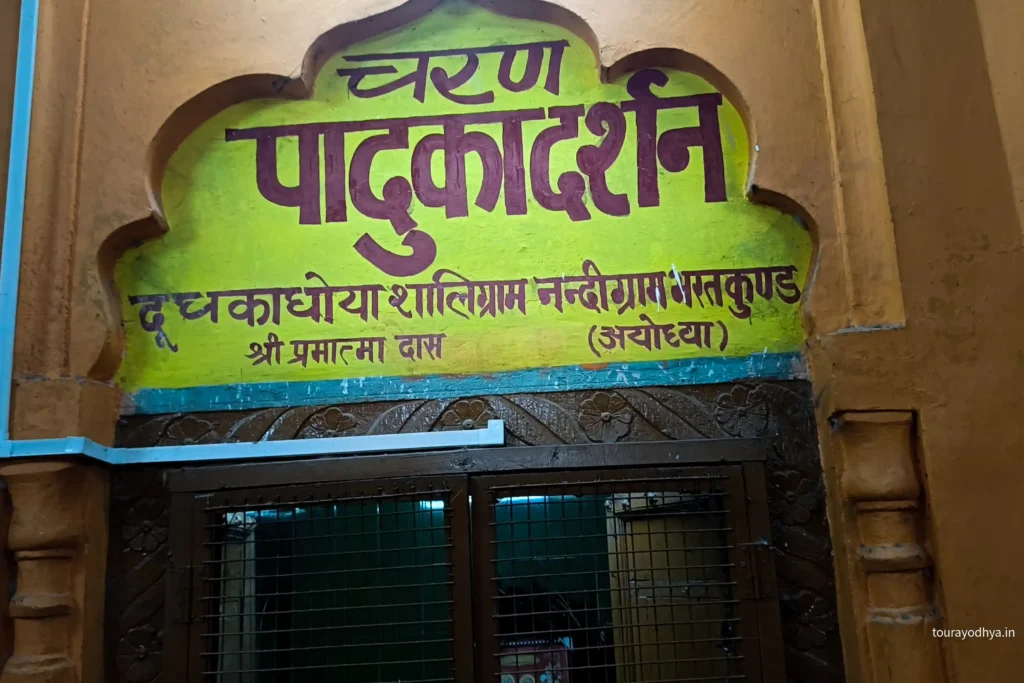
This is where Bharata is said to have lived and worshipped Lord Rama’s padukas for 14 years during Rama’s exile. One of the three caves visible here is believed to have been used by Bharata. Visitors can have the darshan of the Charan Paduka (footprints) in the third cave.
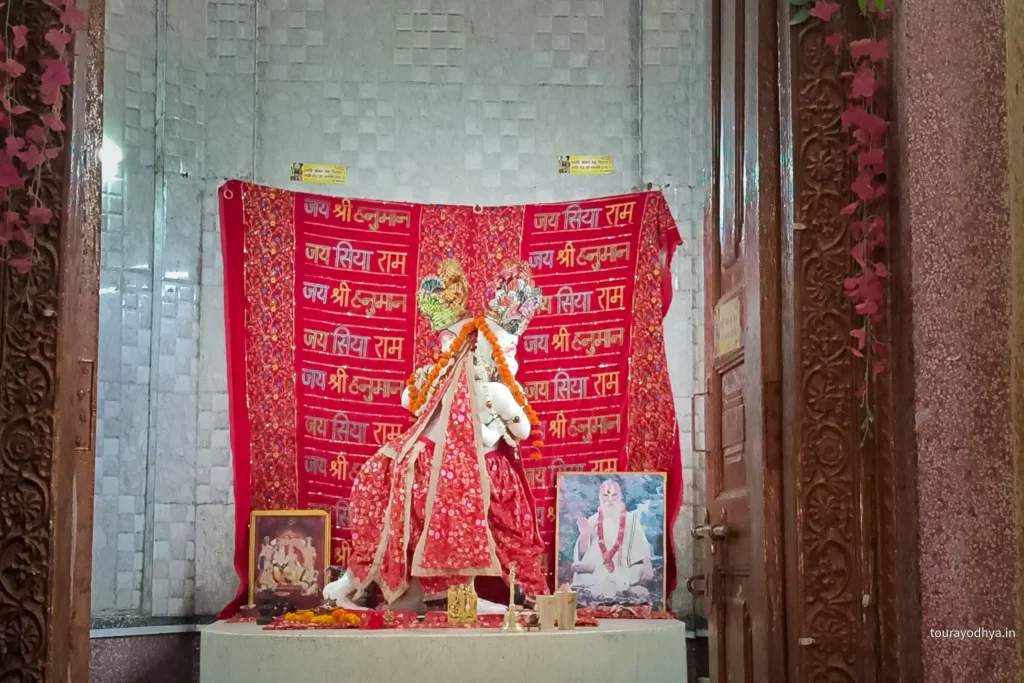
- Sri Bharata Hanuman Milap Temple: This temple marks the sacred spot where Bharata and Hanuman embraced.
The name “Nandigram” itself has a mythological origin. It is believed that Nandi, Lord Shiva’s vehicle, performed severe penance here, pleasing Lord Shiva, who then granted Nandi the boon that the wishes of all devotees visiting this place would be fulfilled. Following this, Nandi established a Shivling here, now known as Nandi Keshwar Mahadev.
Religious Significance in Hinduism
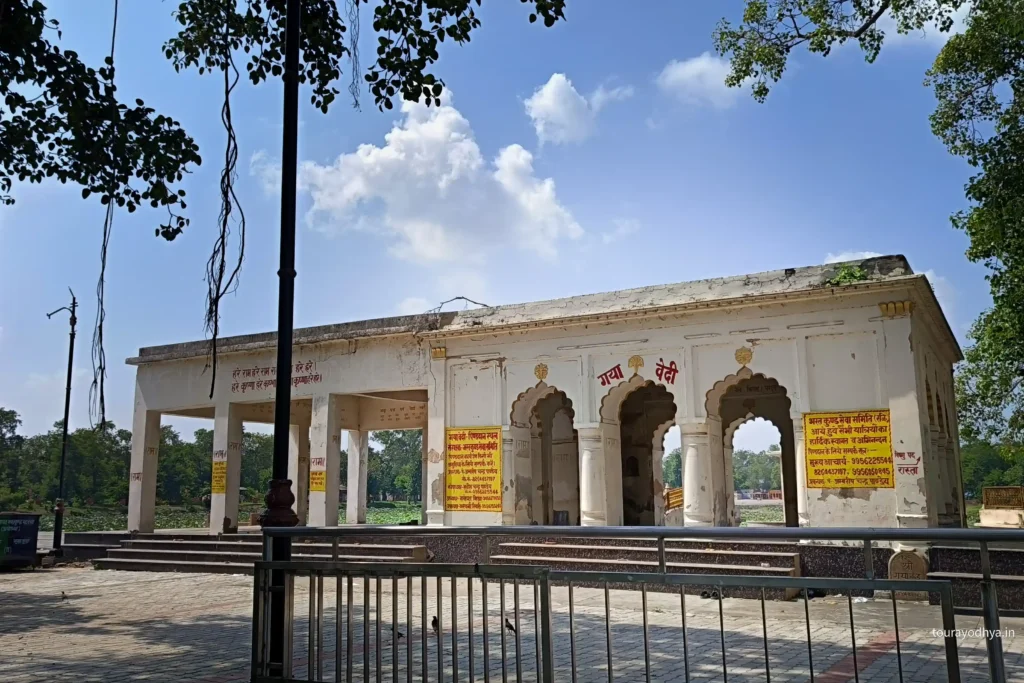
Bharat Kund holds immense religious significance, primarily due to Bharata’s unwavering devotion and asceticism. It is believed that bathing in Bharat Kund purifies one of sins. The site is particularly important for rituals related to ancestors. A well-known as, Gaya well near Bharat Kund, is a place where people come to donate Pind at the time of Pitru Paksha for their ancestors. There is a belief that Lord Vishnu has two feet, one here and the other in Gaya, reinforcing its sacredness for ancestral rites.
The historical Ram-Bharata Milap Temple also signifies the deep fraternal love and devotion embodied by Bharata. The environment at Nandigram, including Bharat Kund, is described as quiet and serene. An Arati ceremony takes place every evening at 6:30 pm, providing a devotional atmosphere for visitors.
Visiting Bharat Kund Today
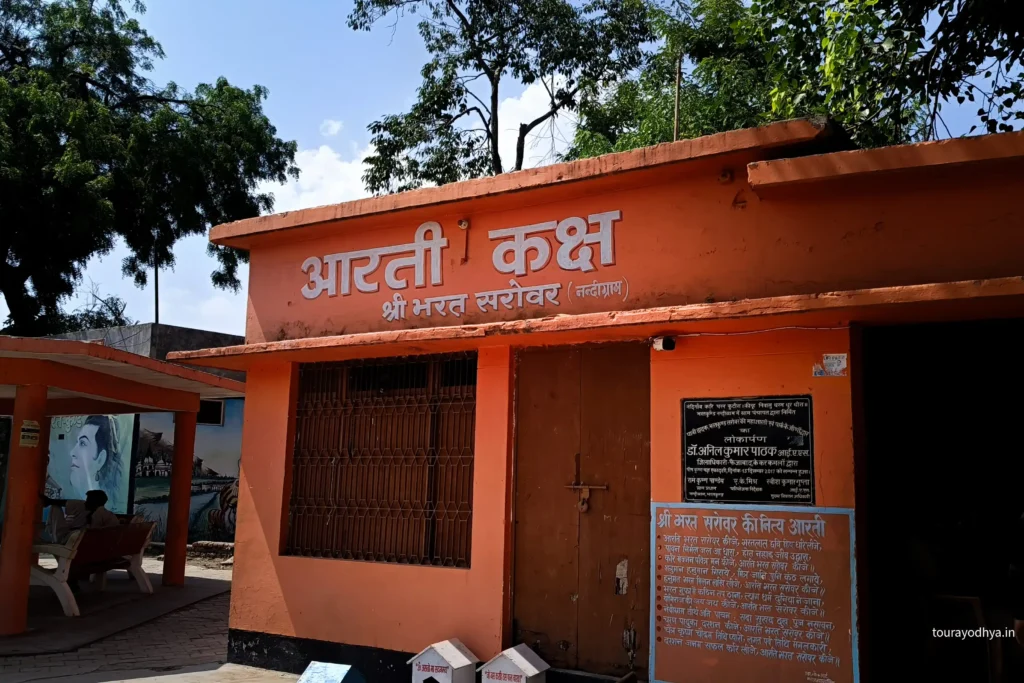
Bharat Kund, as part of Nandigram, is easily accessible and offers a tranquil retreat for devotees and tourists. It is a key pilgrimage site for those undertaking the Ayodhya Dham Yatra.
- Bharat Kund Ayodhya Timings: The sources mention that the Arati ceremony takes place every evening at 6:30 pm. General opening hours are not explicitly stated, but temples and sacred sites in the region are typically open from morning till evening.
- Bharat Kund Ayodhya Location: Bharat Kund is 22 km from Ayodhya, situated in Nandigram. It is accessible by road from Ayodhya.
Bharat Kund Ayodhya Timings:
- Opening Time: 04:00 AM
- Closing Time: 11:00 PM
- Aarti Time: 06:30 PM
Bharat Kund Location :
Bharat Kund is located 22 km from Ayodhya, Uttar Pradesh. Here are the details:
- Address: M42P+GV6, Darshan Nagar – Bharat Kund Marg, Bhadersa Ta. Bahar, Uttar Pradesh 224202
FAQ’s Bharat Kund
What is Bharat Kund known for?
Bharat Kund is primarily known as the place where Lord Rama’s brother, Bharata, lived in austerity for 14 years during Rama’s exile, ruling Ayodhya by keeping Rama’s sandals on the throne. It is also the site of the mythical meeting between Bharata and Hanuman Ji.
Why is Bharat Kund considered sacred for ancestral rites?
It is believed that performing Pind daan (offerings) at the Gaya well near Bharat Kund during Pitru Paksha helps in the liberation of ancestors’ souls. There’s a belief that one of Lord Vishnu’s feet rests here.
Are there other significant sites near Bharat Kund?
Yes, nearby sites include Bharata Gufa (cave), where Bharata performed penance and worshipped Rama’s padukas, and the Sri Bharata Hanuman Milap Temple, commemorating the embrace between Bharata and Hanuman Ji.
What is the significance of the padukas (sandals) at Bharat Kund?
Bharata worshipped Lord Rama’s padukas at Bharata Gufa as a symbol of Rama’s presence and authority during his exile, demonstrating his immense devotion and commitment.



